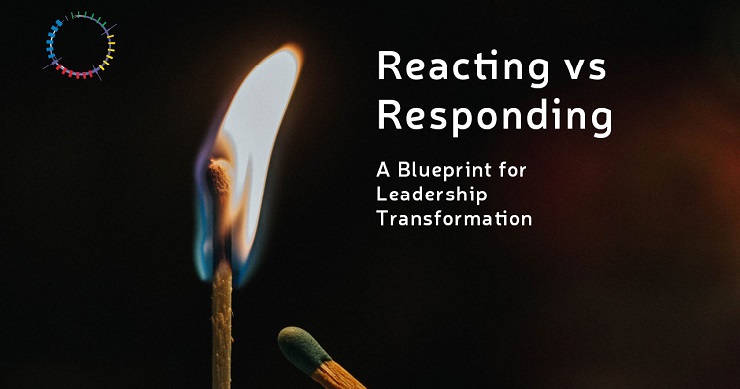From Instinct to Intention: Mastering the Art of Responding
 How Embracing a Conscious Approach Transforms Reaction into Empowered Action
How Embracing a Conscious Approach Transforms Reaction into Empowered Action
In today’s fast-paced and ever-evolving world, the way we handle challenges, stress, and unexpected events can make all the difference in our personal and professional lives. Drawing on insights from SpeciesUniverse.com, Psychology Today, and a thought-provoking video on the subject, this post explores the vital distinction between reacting and responding. For those of us striving to live more consciously recognizing and embracing this difference is the first step toward empowerment and meaningful change.
The original article on SpeciesUniverse.com lays the foundation by clarifying that reacting is an impulsive, emotion-driven process often rooted in survival instincts. It’s a knee-jerk behavior that may satisfy an immediate urge but tends to compound problems in the long term. In contrast, responding is a deliberate and mindful approach. This method involves taking a moment to assess a situation, allowing reason and intuition to guide our actions instead of letting emotions dictate our behavior. Such a shift from automatic reaction to intentional response can foster better decision-making and more harmonious relationships.
The accompanying synopsis from Psychology Today reinforces this perspective by highlighting that true power lies in our ability to pause. When we take that moment to evaluate our feelings and thoughts before acting, we engage our higher cognitive faculties, making choices that are aligned with our long-term goals and values. This reflective pause, much like a quantum leap from a state of chaos to a state of clarity, demonstrates that often, fewer “mental qubits” are needed for a well-considered response than for a flurry of uncontrolled reactions—a metaphorical reminder that quality thinking can triumph over quantity in our decision-making process.
Insights from the video “The Difference between Reacting and Responding” further illuminate this idea. The video emphasizes that the space between stimulus and action is not a void but a fertile ground where conscious choice is cultivated. As one speaker noted, “Between stimulus and response lies our freedom and power to choose,” a sentiment that echoes the ancient wisdom of Epictetus. This perspective encourages us to step back, breathe, and harness our innate capacity to choose responses that are aligned with our true intentions.
Supplementary research from neuroscience and psychology adds further weight to the discussion. Studies have shown that while the limbic system governs our initial emotional reactions, it is the prefrontal cortex—the seat of rational thought and decision-making—that allows us to formulate a considered response. Mindfulness practices, which have been widely promoted in business and therapeutic settings, help strengthen this connection. By training our minds to pause and reflect, we can reduce impulsivity and develop a habit of responding rather than reacting, leading to improved well-being and more effective leadership.
On a personal level, embracing the art of responding can be transformative. For individuals like John, who are keen to understand the universe and our place within it, this shift is not merely a matter of stress management—it’s about evolving our very approach to life. Whether in everyday interactions, challenging work environments, or moments of existential inquiry, the move from automatic reaction to thoughtful response offers a pathway to deeper self-awareness and more deliberate growth. In essence, it is a call to align our actions with the higher aspirations we hold for ourselves and our communities.
In conclusion, integrating the wisdom of SpeciesUniverse.com, the reflective insights from Psychology Today, and the practical guidance from the video can empower us to lead lives marked by clarity, intention, and resilience. By choosing to respond rather than react, we open ourselves to a world of possibilities where challenges become opportunities for growth and every interaction is infused with purpose. This conscious shift is not only beneficial for our personal evolution but also essential for fostering compassionate, effective leadership in all areas of life.
Key Takeaways:
- Mindfulness Matters: Cultivating a pause between stimulus and action allows us to harness our inner wisdom and make choices aligned with our true values.
- Intentional Action Over Impulsive Reaction: Shifting from reactive impulses to thoughtful responses leads to better decision-making and healthier relationships.
- Empowerment Through Reflection: By taking time to assess and choose our actions, we tap into a deeper reservoir of personal power and growth.
“Between stimulus and response lies our power to choose.”
Ready to transform your interactions and unlock your full potential? Explore more insightful content on SpeciesUniverse.com, join our community discussions, and discover how embracing conscious responses can shape a better future for you and those around you.
More details: here
References:
- Psychology Today (Website)
- Self Help for Life (YouTube Channel)


Leave a Reply